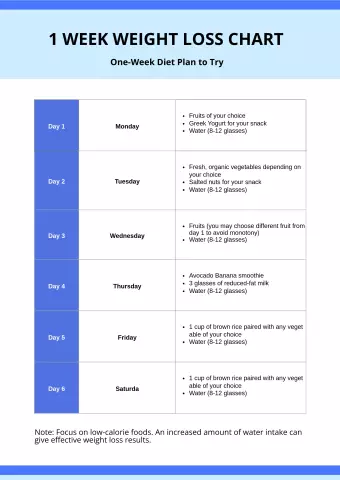- Author Rachel Wainwright [email protected].
- Public 2023-12-15 07:39.
- Last modified 2025-11-02 20:14.
Diet for diseases

For the successful treatment of most diseases, not only drug therapy is required, but also a rational medical diet. Therapeutic diets have been developed for various diseases. Patients who adhere to the principles of preventive nutrition, as a rule, recover faster, have fewer relapses of chronic diseases.
In many cases, the exacerbation of the disease is associated precisely with a violation of the diet. Examples include chronic pancreatitis, hypo- or hyperglycemic coma in diabetes mellitus, type 2 hypertensive crises in patients with arterial hypertension.
For a rational and healthy diet, it is important not only what foods you eat, but also the way they are cooked, the frequency of food intake, etc.
The main goal of the prescribed therapeutic diet for a disease is to influence the cause that caused it. It may even be the only treatment option for the disease. This happens with metabolic disorders, kidney diseases, diseases of the gastrointestinal tract. However, most often dietary and therapeutic-and-prophylactic nutrition is combined with other methods of treatment.
In any medical or preventive institution, as well as in schools, kindergartens, you can find examples of therapeutic and preventive nutrition.
The Institute of Nutrition of the Russian Academy of Medical Sciences has developed special therapeutic diets. There are 15 of them in total. Some diets for diseases may include subgroups. at the onset of many diseases, the requirements for the diet, its calorie content and the mechanism of food preparation may be more stringent than with the attenuation of the clinic or in the period of remission.
Diets for diseases No. 1, 2, 5, 9, 10, 15 can be followed for a long time by the patient, because correctly balanced in all respects: calorie content, ratio of nutrients, etc. With regard to diets No. 4, 5a, 8 this cannot be said. They are applied in short courses with appropriate pathologies.
The main condition and principle of rational and therapeutic nutrition is the observance of the principles of sparing the body from mechanical, thermal or chemical effects of food.
Mechanical sparing involves eating foods that have been crushed, wiped, etc. Such food enhances the motility of the gastrointestinal tract and helps to normalize its work.
Chemical sparing implies the exclusion of sour, spicy, salty, fried foods from the therapeutic diet, because they are able to enhance the secretory activity of the gastrointestinal tract, and some stimulate the entire body.
Thermal sparing means eating food, the temperature of which is in the range of 15-65 ° C.
To follow the correct diet for diseases, the frequency of food intake is also important. Experts recommend five and six meals a day. The intervals between meals should be about 4 hours. The last meal is no later than 2-3 hours before going to bed.
Characteristics of individual therapeutic diets for diseases
- Diet number 1. Indications: gastric and duodenal ulcers, gastritis, GERD, etc. diseases accompanied by increased secretion of gastric juice. The purpose of this diet is to ensure that the mucous membrane of the stomach, esophagus and duodenum is spared when eating. Diet does not mean reducing the energy value of food. The multiplicity of her techniques is at least 5-6 times.
- Diet No. 2. It is prescribed for opposite diseases, ie. gastritis, accompanied by a reduced secretory activity, as well as in chronic colitis. Its purpose is to stimulate the secretory activity of the stomach and enhance the motor function of the gastrointestinal tract, while maintaining the principles of mechanical, chemical and thermal sparing. The energy value of this therapeutic diet is complete. Frequency rate of food intake: 4-5 times a day.
-

Diet menu for diseases Diet number 3. Indications for the appointment are constipation in chronic intestinal diseases. An energetically complete therapeutic diet. Includes foods that enhance intestinal peristalsis: vegetables, baked goods, dairy products.
- Diet No. 4. Shown a diet for bowel diseases during an exacerbation, accompanied by dysfunction. The purpose of this therapeutic diet is to reduce inflammation in the intestines and stabilize its function.
- Diet No. 5. Shown a diet for diseases of the biliary tract, gallbladder and liver. In addition to normalizing the function of the above organs, when this diet is followed, bile secretion is stimulated.
- Diet No. 6. It is indicated for gout, ICD with the formation of urates and uraturia. The purpose of this therapeutic diet is to normalize purine metabolism by reducing the formation of uric acid in the body in the metabolic processes of food products.
- Diet No. 7. Shown a diet for kidney disease: chronic nephritis, acute nephritis during the recovery period, nephrotic syndrome in chronic kidney disease, end-stage CRF (chronic renal failure).
- Diet No. 8. Prescribed for obese patients. The goal of the diet is to reduce body weight, which is achieved by reducing the energy value of the daily diet, mainly due to fats and carbohydrates. Food is fractional, 5-6 times a day. The amount of liquid is reduced to 1 liter and table salt is reduced to 5 g per day.
- Diet No. 9. Indicated for patients with diabetes. The goal is to normalize carbohydrate metabolism in the body. The daily menu is limited to easily digestible carbohydrates and refractory fats. The food is fractional.
- Diet No. 10. It is prescribed for patients with cardiovascular diseases. Thanks to this therapeutic diet, favorable conditions are created for the functioning of the cardiovascular system, and blood pressure decreases. The food is fractional, liquid and table salt are limited. Reduced the amount of animal fats and foods containing cholesterol.
- Diet number 11. Shown for people with exhaustion. It is prescribed in the post-traumatic period, with tuberculosis, etc. The condition for the appointment is the absence of contraindications from the gastrointestinal tract.
- Diet No. 12. It is prescribed for functional disorders of the central nervous system. The goal is to normalize its work by eliminating products that stimulate the nervous system.
- Diet No. 13. Indicated for patients with acute infectious diseases. It has the goal of reducing intoxication, sparing the gastrointestinal tract, increasing the overall strength of the body.
- Diet No. 14. It is prescribed for patients with ICD with the formation of phosphorus-calcium salts and phosphaturia. The purpose of this therapeutic diet is to prevent the precipitation of phosphate salts by changing the acidity of urine to the acidic side.
- Diet No. 15. This diet, except for patients who are shown dietary and therapeutic and prophylactic nutrition, is useful to almost every person, because its goal is to provide the patient with adequate nutrition. It is especially important to observe table No. 15 for convalescent patients, as well as for patients with chronic diseases in the interictal period.
Found a mistake in the text? Select it and press Ctrl + Enter.






